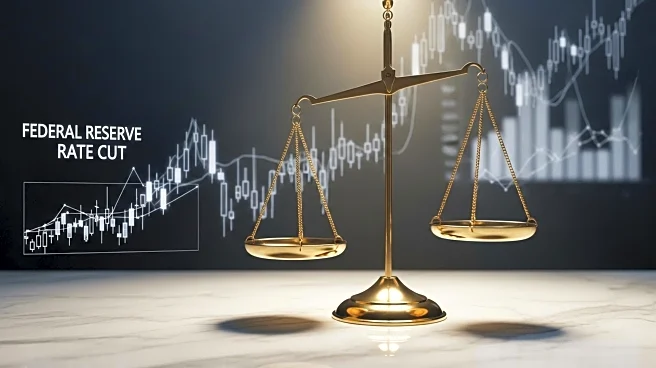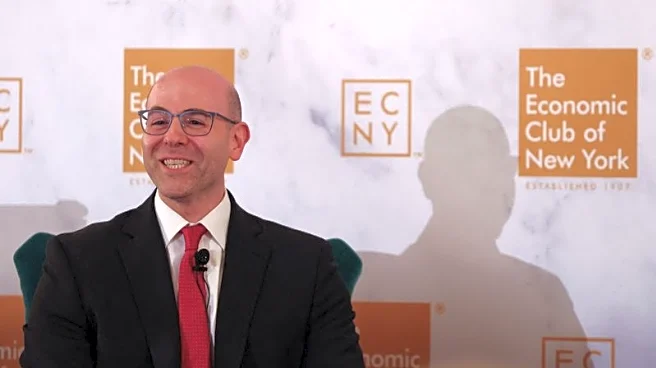What is the story about?
What's Happening?
Minutes from the Federal Reserve's September 2025 meeting reveal a strong inclination among officials to lower interest rates, with a division over the number of cuts required. The Federal Open Market Committee voted 11-1 to reduce the benchmark interest rate by a quarter percentage point, citing labor market weaknesses. The reduction brought the federal funds rate to a target range of 4%-4.25%. The minutes indicate a close split among officials, with a slight majority favoring additional quarter-point cuts at the remaining meetings this year. Newly appointed Governor Stephen Miran was the lone dissenting vote, advocating for a more aggressive half-point cut.
Why It's Important?
The Federal Reserve's decision to lower interest rates is crucial for the U.S. economy, as it aims to address labor market challenges and stimulate growth. Lower rates can reduce borrowing costs, encouraging spending and investment. However, the division among Fed officials highlights the complexity of balancing economic growth with inflation control. The outcome of these discussions could influence financial markets, consumer behavior, and the broader economic landscape, with stakeholders closely monitoring the Fed's policy direction.
What's Next?
The Federal Reserve will continue to assess economic conditions, including labor market data and inflation trends, to determine the necessity and timing of further rate cuts. The ongoing government shutdown may delay the release of key economic reports, complicating the Fed's decision-making process. Stakeholders, including businesses and policymakers, will be watching for signals from the Fed regarding its future monetary policy direction and potential impacts on interest rates and economic growth.
Beyond the Headlines
The Fed's deliberations underscore the challenges of setting monetary policy amid uncertain economic conditions. The differing views among committee members highlight the complexity of balancing growth and inflation risks. The potential for further rate cuts raises questions about the long-term implications for inflation, financial stability, and the Fed's ability to respond to future economic shocks.
AI Generated Content
Do you find this article useful?














